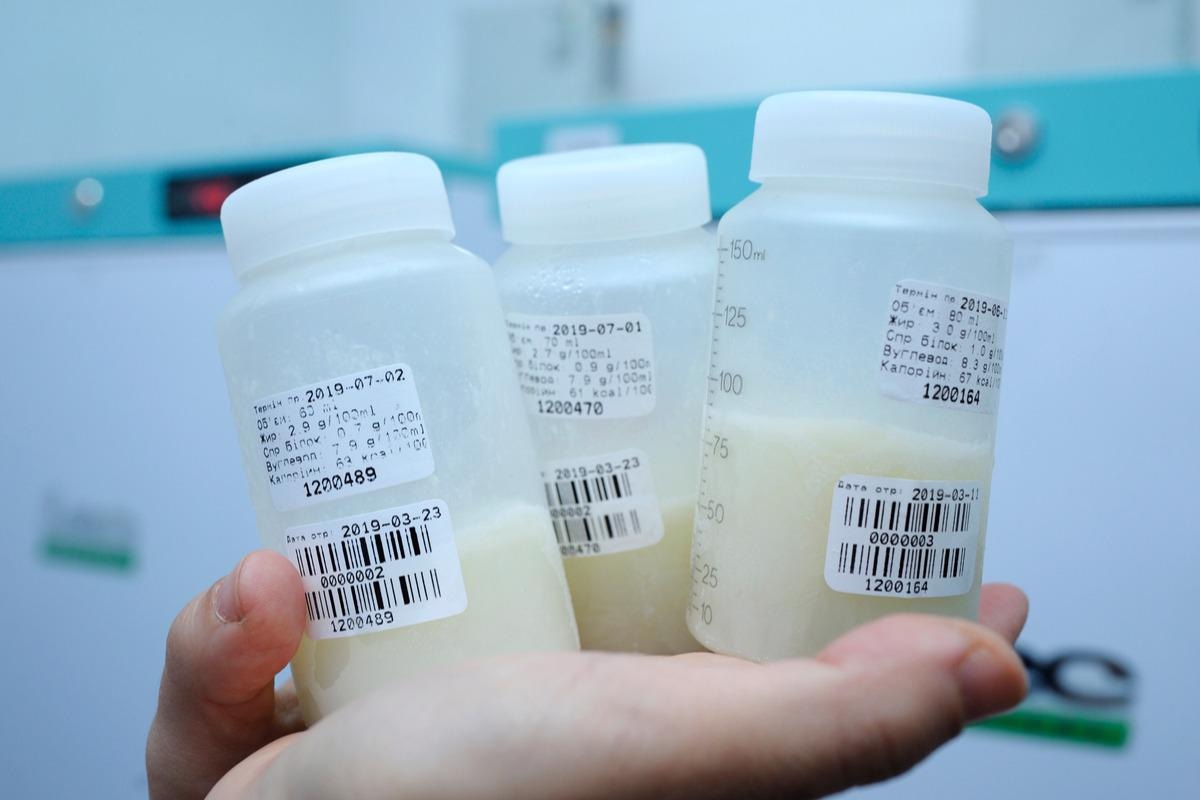The coronavirus disease 2019 (COVID-19) caused by the severe acute respiratory syndrome coronavirus-2 (SARS-CoV-2) accounted for over 5 million global deaths until the end of last year. The SARS-CoV-2 outbreak was first reported in the year 2019, in Wuhan, China, which rapidly spread across nations and transpired into the ongoing pandemic.
 Study: Human Milk Oligosaccharides: Potential Applications in COVID-19. Image Credit: Krysja/Shutterstock
Study: Human Milk Oligosaccharides: Potential Applications in COVID-19. Image Credit: Krysja/Shutterstock
COVID-19 is caused by the zoonotic virus SARS-CoV-2 – belonging to the genus Betacoronavirus, against which numerous vaccines have been developed and several approved for use as prophylactic measures. However, despite ample vaccination coverage, breakthrough infections are not uncommon, mainly owing to newer emerging SARS-CoV-2 variants. These variants emanate due to viral mutations and some harbor enhanced capacities of transmissibility and immune escape.
Currently, three SARS-CoV-2 variants of concern (VOCs), two variants of interest, and nine other variants with the potential to cause human COVID-19 infection have been discovered. Therapeutic strategies proposed for COVID-19 include – antiviral medication, immunomodulators, monoclonal antibodies, oxygen therapy and respiratory support, along with nutritional supplements.
A concerning complication of the disease is its long-term sequelae. Between 10-72.5% of post-acute COVID19 patients experience a long-COVID syndrome—characterized by a spectrum of symptoms, for instance – fatigue, joint pain, dyspnea, palpitation, chest pain, muscle weakness, cognitive impairments, decreased renal function and thromboembolism. These symptoms impose a considerable public health burden and have substantial socioeconomic impact. However, no definitive therapeutic intervention has been devised to manage or prevent the sequelae.
Background
Human milk – the best source of nutrition for newborns, is known to have therapeutic effects against many inflammatory and destructive aspects of the pathogenesis of infections, inflammatory diseases and gut dysbiosis. Studies have found that breastfed infants have a lower risk of morbidity and mortality from lower respiratory tract infections than non-breastfed infants. The benefits of breast milk lie in its biologically active components—growth factors, immunoglobulins, cytokines, antimicrobial peptides, and the non-digestible carbohydrates – human milk oligosaccharides (hMOS).
Beneficial effects of hMOS include anti-infective actions (against bacteria and viruses), signaling, anti-inflammatory/immunomodulatory, and prebiotic actions. Two structurally distinct hMOS – 2′FL and LNnT, have been approved by the US Food and Drug Administration (US FDA) and the European Food Safety Authority (EFSA) as novel ingredients for infant formulas.
The study
The purpose of a recent article published in Biomedicines was to ascertain whether antiviral and immunomodulatory activities of hMOS could be efficacious in the prevention and treatment against COVID-19.
The present review summarized the biogenesis and classification of hMOS, illustrated proposed mechanisms of action of hMOS at different stages of the SARS-CoV2 infection, and discussed challenges and opportunities for conducting research on hMOS for clinical applications against COVID-19.
Discussion
HMOS – structurally diverse non-digestible glycans, are present in a distinct composition in human breast milk, which differs by maternal genetic status, physiology, ethnicity and geography. HMOS can aid in preventing infection, maintaining homeostasis, and nurturing healthy gut microbiota. These are expressed through four modes of action – as receptor binding inhibitors or decoys (competing with pathogens); anti-inflammatory; immunomodulatory effects; and mucosal signaling.
Individuals with blood group A are more susceptible to SARS-CoV-2 infection. Glycosylated moieties regulate the interaction between the viral spike protein and the host ACE2 receptor – the first obligatory step to the viral infection. Several studies link A-type Histo-blood group antigen (HBGA) to this interaction between the SARS-CoV-2 and the human host. Researchers have found that COVID-19 patients with blood group A have a higher predilection of developing pneumonia and cardiovascular complications compared with non-group A.
Micromolecular studies showed that the interaction between SARS-CoV-2 spike protein and ACE2 receptor subdued in the presence of anti-A antibodies. The receptor-binding domain (RBD) of SARS-CoV-2 spike protein showed a preference to binding with A-type 1 HBGA. HMOS exhibit molecular similarity to host cell receptors, which enables them to act as competitive inhibitors to the SARS-CoV-2 spike protein. They demonstrate antiviral potential against several other pathogens as well, for example – human noroviruses, rotavirus, human immunodeficiency virus (HIV) and human influenza virus. The results confirmed that fucosylated hMOS, specifically 2′FL, could inhibit SARS-CoV-2 viral infection through its functional receptor decoy mechanism.
In addition, the anti-inflammatory and immunomodulatory activities of human milk glycans render antiviral benefits. hMOS – as mixtures or as individual molecules, may also have potential for acting as a mucosal signaling agent with TLR4 inhibitory activity, and hence can aid in protection against respiratory mucosal inflammation and acute lung injury in patients with severe COVID-19.
Patients with gut dysbiosis during the acute phase of SARS-CoV-2 infection showed greater disease severity and higher C-reactive protein (CRP) levels. Therefore, it is likely that therapeutic interventions aimed towards reinstating gut eubiosis and restoring immunoregulatory commensals can be promising approaches toward treating COVID-19 disease and preventing its progression and long-term complications. HMOS act as prebiotics via optimizing the gut microbiome and serve as a selective growth substrate for the growth and multiplication of beneficial commensals.
Conclusion
Therefore, hMOS may prove to be a novel promising therapeutic strategy for COVID-19 management. Future investigations should target investigation of its anti-SARS-CoV-2 effects, appropriate routes of administration and oral bioavailability – for clinical applications of hMOS as a new nutraceutical treatment against COVID-19.
- Chutipongtanate, S., Morrow, A., & Newburg, D. (2022). Human Milk Oligosaccharides: Potential Applications in COVID-19. Biomedicines. doi: 10.3390/biomedicines10020346 https://www.mdpi.com/2227-9059/10/2/346
Posted in: Medical Science News | Medical Research News | Disease/Infection News
Tags: ACE2, Antibodies, Antigen, Anti-Inflammatory, Bacteria, Blood, Breast Milk, Cell, Chest Pain, Coronavirus, Coronavirus Disease COVID-19, covid-19, C-Reactive Protein, Cytokines, Dysbiosis, Dyspnea, Fatigue, Food, Food Safety, Genetic, Glycans, HIV, Immunodeficiency, Immunomodulatory, Inflammation, Influenza, Joint Pain, Microbiome, Mortality, Muscle, Nutraceutical, Nutrition, Oxygen, Oxygen Therapy, Pain, Palpitation, Pandemic, Peptides, Physiology, Pneumonia, Prebiotics, Protein, Public Health, Receptor, Research, Respiratory, Respiratory Tract Infections, Rotavirus, SARS, SARS-CoV-2, Severe Acute Respiratory, Severe Acute Respiratory Syndrome, Spike Protein, Supplements, Syndrome, Thromboembolism, Virus

Written by
Nidhi Saha
I am a medical content writer and editor. My interests lie in public health awareness and medical communication. I have worked as a clinical dentist and as a consultant research writer in an Indian medical publishing house. It is my constant endeavor is to update knowledge on newer treatment modalities relating to various medical fields. I have also aided in proofreading and publication of manuscripts in accredited medical journals. I like to sketch, read and listen to music in my leisure time.
Source: Read Full Article



